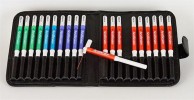Authors
Tiwari V, Hemalatha S. Sida cordifolia L.
Lab
Indian Institute of Technology (B.H.U), Varanasi, 221005, Uttar Pradesh, India
Journal
Journal of Ethnopharmacology
Abstract
Ethnopharmacological relevance: Sida cordifolia L., a perennial subshrub belonging to the Malvaceae family, holds noteworthy significance in the Indian Ayurvedic System and global texts. Roots of this plant are reported to be useful in neurodegenerative disorders, facial paralysis, and treating several neuropathic pain conditions such as neuralgia, and sciatica. However, despite these claims, there remains a dearth of experimental evidence showcasing the effectiveness of Sida cordifolia L. roots in mitigating neuropathic pain. Aim of the study: The primary objective of this study was to assess the analgesic properties of the whole extract (SCE) obtained from the roots of Sida cordifolia L., as well as its aqueous fraction (SAF) in rat model of chronic constriction injury (CCI)-induced neuropathic pain. Furthermore, in-depth phytochemical and molecular biology studies were conducted to identify the potential phytoconstituents and unveil the underlying mechanisms of action. Material and methods: DCM: Methanol (1:1) was used to extract the roots of Sida cordifolia L. to get whole extract (SCE) and was subjected to phytochemical investigations including LC-MS analysis. Analgesic potential of SCE was evaluated in chronic constriction injury (CCI) model of neuropathic pain in rats followed by its bioactivity guided fractionation using in-vitro anti-inflammatory assay and assessment of most potent fraction (SAF) in in-vivo pain model. We have also performed the detailed phytochemical and molecular biology investigations to delineate the mechanism of action of Sida cordifolia root extract. Results: Chronic constriction injury leads to significant decrease in paw withdrawal threshold and paw withdrawal latency indicating development of hypersensitivity in rodents. Treatment with SCE and its most potent aqueous fraction (SAF) leads to significant and dose-dependent reduction in pain-like behavior of nerve injured rats. Pro-inflammatory cytokines (TNF-α, IL-1β), glia cell markers (Iba1, ICAM1), neuropeptides (CGRP and Substance P), KIF-17 and NR2B expressions were found to be significantly upregulated in DRG and spinal cord of nerve injured rats. Treatment with SCE and SAF suppressed oxido-inflammatory cascade along with attenuation of KIF-17 mediated NR2B trafficking and neuroinflammation in DRG and spinal tissues of neuropathic rats. HPTLC and HR-MS analysis suggest betaine as major constituent in SAF which along with other phytoconstituents. Conclusions: Both the whole extract (SCE) and the aqueous fraction (SAF) demonstrate a significant reduction in mechanical and thermal hypersensitivity by inhibiting KIF-17 mediated NR2B signaling in nerve injured rats and may be used as a potential alternative for the treatment of chronic pain. Our findings support the use of roots of Sida cordifolia L. in neuropathic pain conditions as acclaimed by its traditional use.
BIOSEB Instruments Used:
Von Frey Filaments (BIO-VF-M)

 Douleur - Allodynie/Hyperalgésie Thermique
Douleur - Allodynie/Hyperalgésie Thermique Douleur - Spontanée - Déficit de Posture
Douleur - Spontanée - Déficit de Posture Douleur - Allodynie/Hyperalgésie Mécanique
Douleur - Allodynie/Hyperalgésie Mécanique Apprentissage/Mémoire - Attention - Addiction
Apprentissage/Mémoire - Attention - Addiction Physiologie & Recherche Respiratoire
Physiologie & Recherche Respiratoire
 Douleur
Douleur Métabolisme
Métabolisme Système moteur
Système moteur Neurodégénérescence
Neurodégénérescence Thématiques transversales
Thématiques transversales Système musculaire
Système musculaire Functions de motricité générale
Functions de motricité générale Troubles de l'humeur
Troubles de l'humeur Autres pathologies
Autres pathologies Articulations
Articulations Système Nerveux Central (SNC)
Système Nerveux Central (SNC)  Système sensoriel
Système sensoriel Bioseb on booth #14 at OARSI 2024 in Vienna
Bioseb on booth #14 at OARSI 2024 in Vienna 